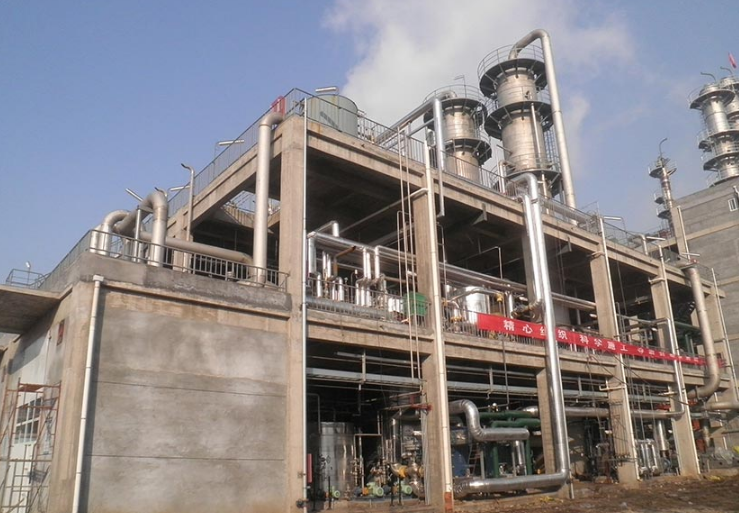Definition of Trioxane
Trioxane is a term used to describe any of three isomeric organic compounds, each characterized by a six-membered ring structure with three carbon atoms and three oxygen atoms. These compounds are cyclic formals of formaldehyde and have significant industrial relevance due to their unique properties and applications.
Trioxane's importance lies in its versatility. It is a crucial intermediate in the production of engineering plastics like Polyoxymethylene (POM), widely used as a disinfectant, a catalyst in the manufacturing of epoxy resins and bisphenol A, and a vital ingredient in daily cosmetics such as cold creams and depilatory agents. Additionally, trioxane serves as an inhibitor for mineral formations like copper sulfide and iron sulfide.
Types and Categories
Isomeric Forms of Trioxane
Trioxane exists in three isomeric forms: 1,3,5-trioxane, 1,2,4-trioxane, and 1,3,6-trioxane. These isomers differ in the arrangement of the oxygen and carbon atoms within their ring structures, which affects their chemical properties and applications.
Differences Between Isomers
Each isomer of trioxane exhibits distinct chemical behaviors. For example, 1,3,5-trioxane is commonly used in the synthesis of engineering plastics, while the other isomers might find more specialized uses in other chemical processes or research applications.
Industrial Applications
Intermediate for Engineering Plastics
One of the primary uses of trioxane is as an intermediate in the production of Polyoxymethylene (POM), an engineering plastic known for its high stiffness, low friction, and excellent dimensional stability.
Disinfectant Properties
Trioxane is also valued for its disinfectant properties. It is used in various applications where its ability to kill or inhibit the growth of microorganisms is beneficial, such as in medical and sanitation products.
Catalyst in Epoxy Resin Production
In the production of epoxy resins, trioxane acts as a catalyst. It helps in the polymerization process, enhancing the properties of the final epoxy resin products, which are used in coatings, adhesives, and composite materials.
Raw Material in Cosmetics
Trioxane is a key raw material in the cosmetics industry, particularly in the formulation of cold creams and depilatory agents. Its chemical properties make it ideal for use in these products, providing benefits like improved texture and efficacy.
Mineral Inhibitors
In the mining industry, trioxane is used as an inhibitor for copper sulfide and iron sulfide minerals. This application helps prevent the formation of unwanted mineral deposits, enhancing the efficiency of mining operations.

Production Methods
Laboratory Synthesis
Trioxane can be synthesized in the laboratory through the acid-catalyzed trimerization of formaldehyde. This method allows for precise control over the reaction conditions, producing high-purity trioxane.
Industrial Production Techniques
In industrial settings, trioxane is typically produced through similar methods but on a larger scale. Industrial production focuses on efficiency and cost-effectiveness, ensuring a steady supply for various applications.
Safety Considerations
Both laboratory and industrial production of trioxane require careful handling and safety precautions. Trioxane is a reactive compound, and appropriate measures must be taken to prevent accidents and ensure the safety of workers.
Role in Engineering Plastics
Application in Polyoxymethylene (POM)
Trioxane is a crucial intermediate in the production of Polyoxymethylene (POM), a high-performance engineering plastic. POM is used in precision parts that require high stiffness, low friction, and excellent dimensional stability, such as gears, bearings, and fasteners.
Benefits in Engineering Applications
The use of trioxane in producing POM results in materials with superior mechanical properties. These materials are essential in industries like automotive, electronics, and consumer goods, where durability and performance are critical.
Use as a Disinfectant
Mechanism of Action
Trioxane's disinfectant properties arise from its ability to disrupt the cell membranes of microorganisms, leading to their death. This makes it effective against a wide range of bacteria, viruses, and fungi.
Advantages Over Other Disinfectants
Compared to other disinfectants, trioxane offers several advantages, including a broad spectrum of activity, relatively low toxicity to humans, and minimal environmental impact.
Common Uses
Trioxane-based disinfectants are used in healthcare settings, sanitation products, and various other applications where microbial control is essential. They provide reliable and effective disinfection, helping to maintain hygiene and prevent infections.
Catalyst in Epoxy Resin Production
Role and Mechanism
In epoxy resin production, trioxane acts as a catalyst, promoting the polymerization of the resin. This results in materials with enhanced mechanical and thermal properties, suitable for high-performance applications.
Benefits in Epoxy Resin Production
The use of trioxane in epoxy resin production leads to materials with improved strength, durability, and resistance to environmental factors. These properties make epoxy resins ideal for use in coatings, adhesives, and composite materials.
Cosmetic Applications
Use in Cold Creams
Trioxane is an important ingredient in cold creams, where it helps stabilize the emulsion and improve the product's texture. This results in a smoother, more pleasant application experience for the user.
Role in Depilatory Agents
In depilatory agents, trioxane helps break down the protein structure of hair, making it easier to remove. This enhances the efficacy of the product, providing smoother, longer-lasting results.
Benefits in Cosmetic Products
Overall, the use of trioxane in cosmetics provides several benefits, including improved product performance, enhanced user experience, and greater formulation stability.
Mineral Inhibition
Mechanism of Mineral Inhibition
Trioxane inhibits the formation of mineral deposits by interfering with the crystallization process. This prevents the buildup of copper sulfide and iron sulfide minerals, which can cause operational issues in mining and other industries.
Applications in Mining Industry
In the mining industry, trioxane's mineral inhibition properties help improve the efficiency of extraction and processing operations. This leads to higher yields and reduced maintenance costs, contributing to more sustainable mining practices.
Environmental Impact
Biodegradability
Trioxane is biodegradable, meaning it breaks down naturally over time. This reduces its environmental impact and makes it a more sustainable option compared to some other chemicals.
Ecological Considerations
When used and disposed of properly, trioxane has minimal ecological impact. However, it is important to follow safety guidelines and regulations to ensure that its use does not harm the environment.
Safety and Handling
Safety Precautions
Handling trioxane requires appropriate safety precautions, including the use of personal protective equipment (PPE) and proper ventilation. It is important to avoid direct contact with the skin and eyes and to prevent inhalation of vapors.
Handling Procedures
Standard handling procedures for trioxane include storing it in a cool, dry place away from incompatible substances. It should be handled with care to prevent spills and exposure.
Storage Recommendations
Trioxane should be stored in airtight containers to prevent moisture absorption and degradation. Proper labeling and segregation from other chemicals are also important to ensure safe storage.
Comparative Analysis
Comparison with Similar Compounds
When compared to similar compounds, trioxane offers unique advantages, such as its reactivity and versatility. This makes it a preferred choice for many applications, despite some of its handling challenges.
Advantages and Disadvantages
The advantages of trioxane include its effectiveness as an intermediate, disinfectant, and catalyst. However, it also has some disadvantages, such as the need for careful handling and storage due to its reactivity.
FAQs
Q: What is trioxane used for?
A: Trioxane is used as an intermediate for engineering plastics, a disinfectant, a catalyst in epoxy resin production, and a raw material in cosmetics.
Q: Is trioxane safe to handle?
A: Yes, trioxane is safe to handle when proper safety precautions are followed, including the use of personal protective equipment and proper ventilation.
Q: How does trioxane act as a disinfectant?
A: Trioxane disrupts the cell membranes of microorganisms, leading to their death and providing effective disinfection.
Q: What are the benefits of using trioxane in cosmetics?
A: Trioxane improves the texture and stability of cosmetic products, enhancing their performance and user experience.
Troubleshooting Tips
If issues arise while using trioxane, such as handling difficulties or unexpected reactions, it is important to consult safety data sheets and seek advice from experts. Proper training and adherence to guidelines can help prevent and address these issues.
This concludes the comprehensive guide on trioxane. For more information or to inquire about suppliers, contact us through our website.
















